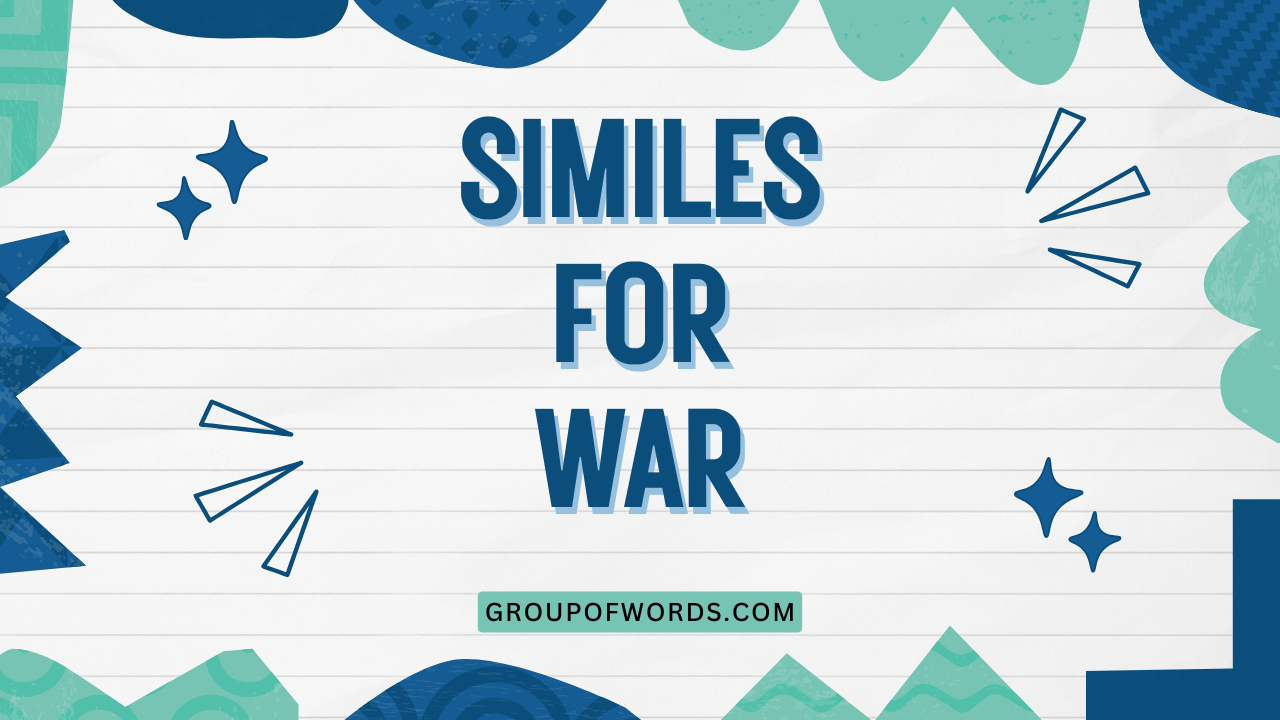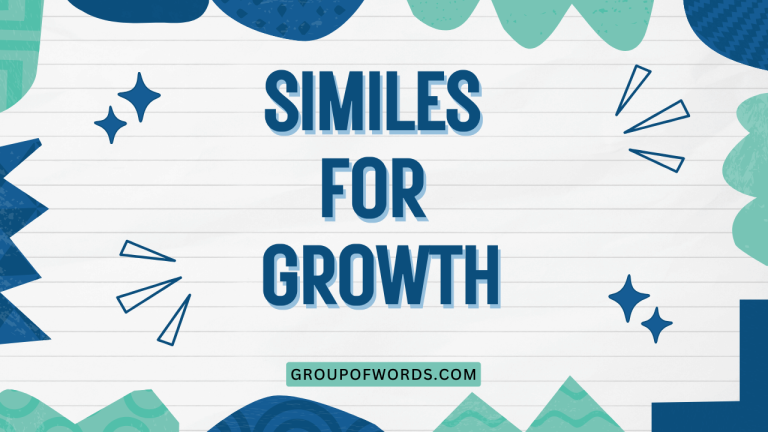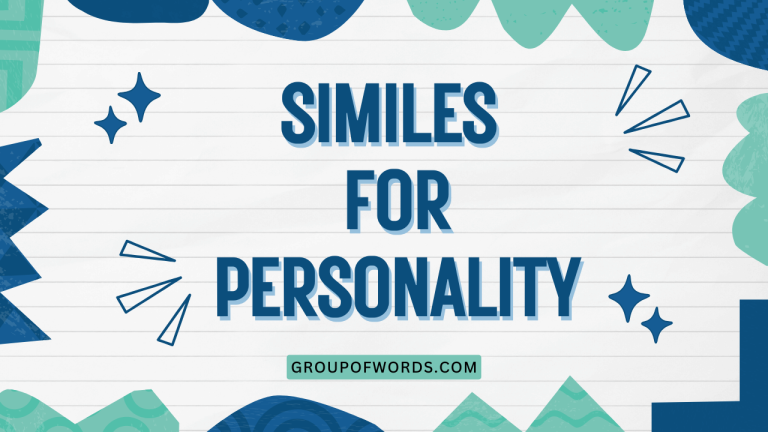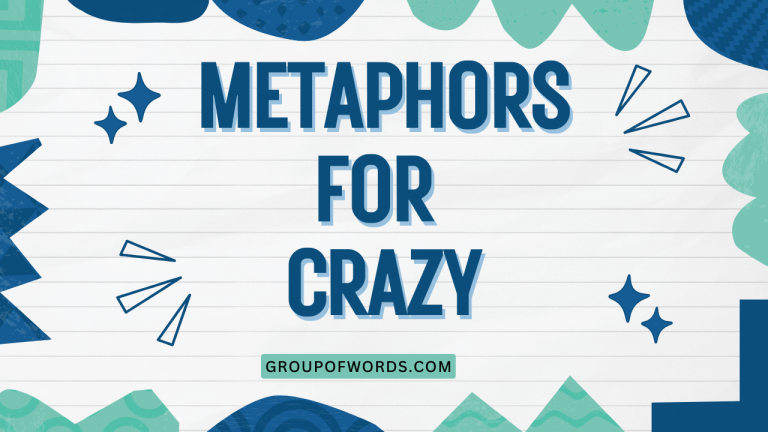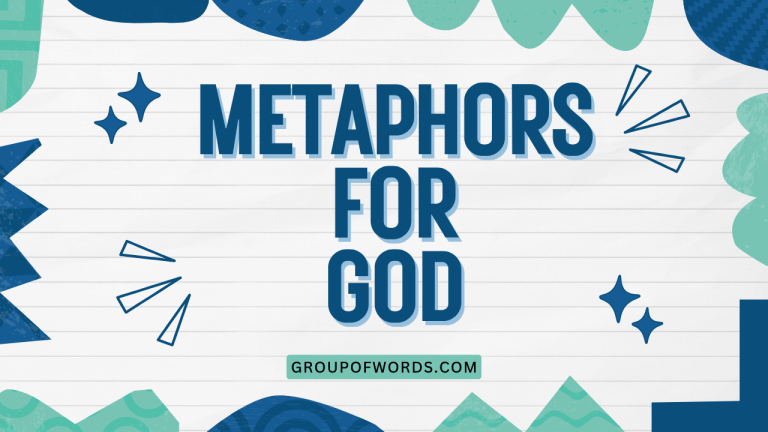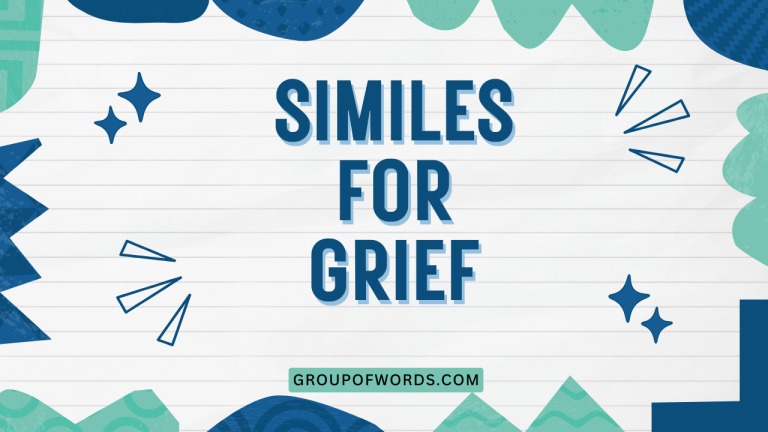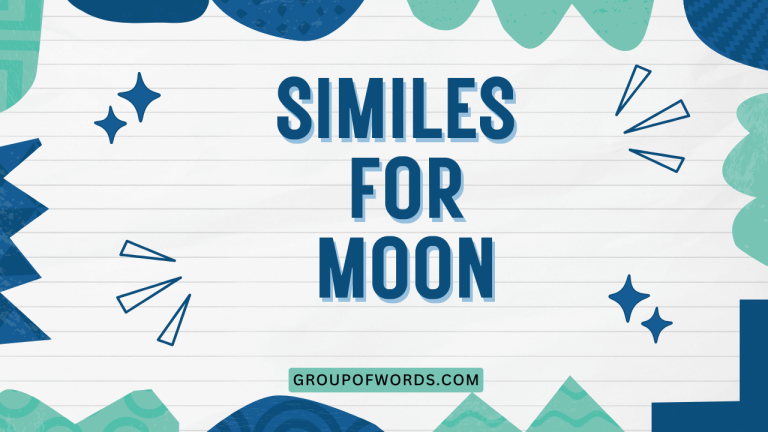Similes for War: A Comprehensive Guide
Similes are powerful tools in the English language, allowing us to draw vivid comparisons and create impactful imagery. When describing something as complex and multifaceted as war, similes become particularly useful.
This article delves into the world of similes for war, exploring their structure, types, and usage. Understanding these similes will not only enhance your comprehension of literature and historical accounts but also improve your own writing and communication skills.
This guide is designed for students, writers, and anyone interested in deepening their understanding of English grammar and figurative language.
Whether you’re a student analyzing war poetry, a writer crafting a compelling narrative, or simply someone who appreciates the power of language, this comprehensive guide will provide you with the knowledge and tools you need to master the art of using similes to describe war.
Table of Contents
- Introduction
- Definition of Simile
- Structural Breakdown of Similes
- Types of Similes for War
- Examples of Similes for War
- Usage Rules for Similes
- Common Mistakes with Similes
- Practice Exercises
- Advanced Topics
- FAQ
- Conclusion
Definition of Simile
A simile is a figure of speech that directly compares two unlike things using the words “like” or “as.” It’s a way of enhancing description by relating a familiar concept to a less familiar one, making the latter more vivid and understandable. Similes are essential tools for writers and speakers seeking to create imagery, evoke emotions, and clarify complex ideas.
They fall under the broader category of figurative language, which also includes metaphors, personification, and hyperbole.
In the context of war, similes allow us to grasp the abstract nature of conflict by comparing it to more concrete and relatable experiences. For example, saying “the battlefield was like a raging inferno” helps us visualize the heat, destruction, and all-encompassing nature of war. The function of a simile is not merely decorative; it actively shapes our perception and understanding of the subject at hand.
Structural Breakdown of Similes
The basic structure of a simile is quite simple, involving the comparison of two distinct elements using “like” or “as.” Understanding this structure is crucial for both identifying and creating effective similes.
A simile typically consists of the following components:
- The subject: The thing being described (in this case, war or an aspect of war).
- The comparison word: Either “like” or “as.”
- The object of comparison: The thing the subject is being compared to.
- The shared quality: The characteristic that the subject and object of comparison have in common.
For example, in the simile “The soldiers advanced like a swarm of locusts,” the subject is “soldiers,” the comparison word is “like,” the object of comparison is “a swarm of locusts,” and the shared quality is the overwhelming and relentless nature of the advance. Recognizing these components allows for a deeper appreciation of how similes function rhetorically.
Types of Similes for War
Similes for war can be categorized based on the aspect of war they emphasize. Here are some common types:
Similes of Intensity
These similes highlight the extreme nature of war, emphasizing its violence, destructiveness, and overwhelming power. They often use comparisons to natural disasters or powerful forces.
Similes of Chaos and Destruction
These similes focus on the disorder and devastation caused by war, painting a picture of pandemonium and ruin. They often compare the battlefield to scenes of natural disaster, ruin, or complete disarray.
Similes of Emotional Impact
These similes explore the psychological effects of war, focusing on the fear, grief, and trauma experienced by those involved. They often use comparisons to feelings of despair, loss, and isolation.
Similes of Speed and Force
These similes emphasize the rapid and forceful nature of military actions, highlighting the speed of attacks and the impact of weaponry. They often compare military movements to fast-moving animals or powerful machines.
Similes of Oppression and Control
These similes illustrate the controlling and repressive aspects of war, focusing on the loss of freedom and the imposition of authority. They often compare the situation to imprisonment or slavery.
Examples of Similes for War
The following sections provide extensive examples of similes for war, organized by category. Each example illustrates a different aspect of the conflict and demonstrates the versatility of similes as a descriptive tool.
Examples of Similes of Intensity
This table showcases similes that emphasize the extreme and overwhelming intensity of war, using comparisons to powerful and destructive forces.
| Simile | Explanation |
|---|---|
| The battle raged like a wildfire. | Implies the rapid and uncontrollable spread of violence. |
| The explosions were as deafening as thunder. | Highlights the sheer volume and impact of the blasts. |
| The conflict burned like a fever. | Suggests an intense, consuming, and debilitating force. |
| The fighting was as fierce as a hurricane. | Emphasizes the destructive power and relentless energy. |
| The war felt like an endless nightmare. | Captures the terrifying and inescapable nature of the experience. |
| The pressure mounted like a volcano ready to erupt. | Illustrates the buildup of tension and impending violence. |
| The enemy’s advance was as relentless as a rising tide. | Conveys the unstoppable and overwhelming nature of the attack. |
| The soldiers fought like cornered animals. | Highlights the desperation and ferocity of the combatants. |
| The bombing was as devastating as an earthquake. | Emphasizes the widespread destruction and catastrophic impact. |
| The city was as vulnerable as a lamb to the slaughter. | Illustrates the defenselessness and impending doom of the location. |
| The pain of loss was like a knife twisting in his heart. | Conveys the sharp, agonizing, and enduring nature of grief. |
| The fear was as palpable as a physical weight. | Emphasizes the overwhelming and oppressive sense of dread. |
| The war zone was like a furnace of destruction. | Highlights the intense heat and all-consuming devastation. |
| The cries of the wounded were as piercing as sirens. | Conveys the shrill, penetrating, and distressing sounds of suffering. |
| The soldiers’ resolve was as strong as steel. | Emphasizes the unwavering determination and resilience of the troops. |
| The battle’s intensity was like a raging storm. | Highlights the chaotic and uncontrollable nature of the fighting. |
| The destruction was as complete as a forest fire’s aftermath. | Emphasizes the total and irreversible devastation left behind. |
| The air was as thick with tension as a coiled spring. | Conveys the palpable sense of anticipation and impending conflict. |
| The soldiers marched forward like a force of nature. | Highlights the unstoppable and overwhelming momentum of the troops. |
| The war’s impact was like a tidal wave crashing over the nation. | Emphasizes the widespread and devastating consequences of the conflict. |
| The experience was as scarring as a burn. | Highlights the long-lasting psychological impact. |
| The silence after the battle was as heavy as lead. | Emphasizes the oppressive and profound sense of loss. |
| The soldiers were as brave as lions. | Highlights their courage and ferocity in battle. |
Examples of Similes of Chaos and Destruction
This table presents similes that capture the chaotic and destructive nature of war, comparing it to scenes of disarray and devastation.
| Simile | Explanation |
|---|---|
| The battlefield was like a junkyard of shattered dreams. | Suggests the destruction of hopes and aspirations. |
| The city looked as if a giant had stomped on it. | Emphasizes the scale of devastation. |
| The streets were like a maze of rubble. | Highlights the disorienting and dangerous conditions. |
| The aftermath of the attack was like a scene from hell. | Conveys the horror and suffering experienced. |
| The landscape was as barren as the moon. | Emphasizes the complete lack of life and hope. |
| The city was as chaotic as a disturbed anthill. | Illustrates the frantic and disorganized activity. |
| The fighting was like a brawl in a bar. | Highlights the uncontrolled and unpredictable nature of the conflict. |
| The refugee camp was like a sea of despair. | Conveys the overwhelming sense of hopelessness. |
| The destroyed buildings looked like hollow skulls. | Emphasizes the emptiness and death left behind. |
| The battlefield was as disordered as a child’s playroom after a tantrum. | Illustrates the complete lack of order and control. |
| The bombing raid sounded like the end of the world. | Highlights the apocalyptic nature of the event. |
| The political situation was as unstable as a house of cards. | Emphasizes the fragility and impending collapse of order. |
| The economy collapsed like a poorly constructed building. | Illustrates the sudden and complete failure. |
| The government was as corrupt as a rotten apple. | Highlights the pervasive and destructive nature of the corruption. |
| The negotiations were as productive as banging your head against a wall. | Emphasizes the futility and frustration of the process. |
| The soldiers retreated like a flock of sheep scattered by a wolf. | Highlights the disorganized and panicked nature of the retreat. |
| The information was as reliable as a weather forecast. | Emphasizes the uncertainty and potential inaccuracy of the data. |
| The peace treaty was as fragile as glass. | Illustrates the ease with which it could be broken. |
| The alliance was as strong as wet tissue paper. | Emphasizes the weakness and ineffectiveness of the coalition. |
| The propaganda was as effective as a snake charmer’s flute. | Highlights the deceptive and manipulative nature of the message. |
| The city was flattened like a pancake. | Highlights the utter destruction of the city. |
| The sound of bombs was akin to the symphony of death. | Emphasizes the destructive and deadly nature of the war. |
Examples of Similes of Emotional Impact
This table provides similes that delve into the emotional toll of war, comparing it to experiences of grief, fear, and trauma.
| Simile | Explanation |
|---|---|
| The grief was like a constant companion. | Suggests the persistent and inescapable nature of sorrow. |
| The fear was as cold as ice. | Emphasizes the chilling and paralyzing effect of fear. |
| The memories haunted him like ghosts. | Highlights the persistent and disturbing nature of traumatic recollections. |
| The hope was as fragile as a butterfly’s wing. | Conveys the delicate and easily shattered nature of optimism. |
| The despair was as deep as an abyss. | Emphasizes the profound and overwhelming sense of hopelessness. |
| The silence was like a scream trapped in his throat. | Illustrates the suppressed pain and anguish. |
| The trauma was like a scar on his soul. | Highlights the enduring and disfiguring effect of the experience. |
| The sense of loss was like an amputation. | Conveys the feeling of being incomplete and diminished. |
| The guilt weighed on him like a ton of bricks. | Emphasizes the oppressive and burdensome nature of remorse. |
| The pain was as sharp as shattered glass. | Illustrates the intense and piercing nature of the suffering. |
| The relief after the ceasefire was like a breath of fresh air. | Highlights the liberating and revitalizing effect of peace. |
| The burden of command felt like Atlas carrying the world. | Emphasizes the immense responsibility and pressure. |
| The anticipation of battle was like waiting for a firing squad. | Highlights the dread and fear of impending doom. |
| The loneliness of war was as vast as the open sea. | Conveys the feeling of isolation and disconnection. |
| The feeling of betrayal cut like a double-edged sword. | Emphasizes the deep and painful impact of treachery. |
| The emptiness inside was like a black hole. | Illustrates the consuming and all-encompassing sense of loss. |
| The anger burned like a wildfire in his heart. | Highlights the intense and uncontrollable nature of the rage. |
| The fear of death was as constant as his heartbeat. | Conveys the ever-present awareness of mortality. |
| The hope for peace flickered like a candle in the wind. | Emphasizes the fragility and vulnerability of the desire for peace. |
| The survivor’s guilt was a shadow that followed him everywhere. | Highlights the persistent and inescapable nature of the remorse. |
| The pain of war was like a poison spreading through the nation. | Highlights the destructive and pervasive effect of the war. |
Examples of Similes of Speed and Force
This table provides similes that focus on the rapid and forceful nature of military actions, emphasizing speed, impact, and power.
| Simile | Explanation |
|---|---|
| The tanks advanced like a stampede of elephants. | Suggests the overwhelming power and speed of the armored vehicles. |
| The fighter jets screamed through the sky like arrows. | Emphasizes the swiftness and precision of the aircraft. |
| The bombs fell like hailstones. | Highlights the rapid and relentless descent of the explosives. |
| The troops moved as quickly as a striking snake. | Conveys the agility and swiftness of the soldiers. |
| The attack came like a lightning strike. | Emphasizes the suddenness and devastating impact of the assault. |
| The missiles soared through the air like rockets. | Illustrates the speed and trajectory of the projectiles. |
| The soldiers charged like a pack of wolves. | Highlights the ferocity and coordinated nature of the attack. |
| The artillery fire rained down like a storm of steel. | Conveys the intensity and destructive power of the bombardment. |
| The news spread like wildfire. | Emphasizes the rapid dissemination of information. |
| The army advanced as quickly as a forest fire. | Illustrates the speed and unstoppable nature of the military advance. |
| The counterattack hit like a hammer. | Highlights the forceful and decisive nature of the response. |
| The political landscape shifted as quickly as sand through an hourglass. | Emphasizes the rapid and unpredictable changes in the political situation. |
| The stock market crashed like a house of cards. | Illustrates the sudden and complete collapse of the financial system. |
| The rumor spread like a virus. | Emphasizes the rapid and uncontrollable dissemination of the gossip. |
| The negotiations collapsed as quickly as a popped balloon. | Highlights the sudden and unexpected failure of the talks. |
| The revolution swept through the country like a hurricane. | Conveys the overwhelming force and widespread impact of the uprising. |
| The new policy was implemented as quickly as possible. | Emphasizes the rapid implementation of the new regulations. |
| The reaction was as swift as a cobra’s strike. | Illustrates the speed and precision of the response. |
| The impact was like a sledgehammer to the economy. | Highlights the devastating effect on the financial system. |
| The soldiers moved through the jungle as quietly as shadows. | Emphasizes their stealth and lack of visibility. |
Examples of Similes of Oppression and Control
This table showcases similes that illustrate the oppressive and controlling aspects of war, focusing on the loss of freedom and the imposition of authority.
| Simile | Explanation |
|---|---|
| The occupation felt like living in a cage. | Suggests the loss of freedom and confinement. |
| The government controlled the people like puppets on strings. | Emphasizes the complete lack of autonomy. |
| The curfew was as restrictive as a prison sentence. | Conveys the limitations on movement and activity. |
| The propaganda was like a mental prison. | Highlights the manipulation and control of thought. |
| The citizens were as helpless as lambs before a slaughter. | Emphasizes their vulnerability and lack of power. |
| The dictator ruled with an iron fist. | Illustrates the harsh and uncompromising nature of the regime. |
| The society was as regimented as an ant colony. | Highlights the strict order and lack of individuality. |
| The censorship was like a wall blocking out the truth. | Conveys the suppression of information and free expression. |
| The surveillance was as constant as a shadow. | Emphasizes the pervasive and inescapable monitoring. |
| The laws were as oppressive as chains. | Illustrates the restrictions on freedom and movement. |
| The atmosphere was as suffocating as a closed room. | Highlights the oppressive and stifling environment. |
| The regime was as brutal as a pack of wolves. | Conveys the cruelty and ruthlessness of the government. |
| The indoctrination was as thorough as brainwashing. | Emphasizes the complete control over thought and belief. |
| The promises of freedom were as empty as a politician’s words. | Highlights the deceptive and insincere nature of the pledges. |
| The hope for change was as faint as a dying ember. | Conveys the diminishing and precarious nature of optimism. |
| The restrictions on speech felt like a gag. | Illustrates the suppression of free expression. |
| The fear of reprisal was as constant as the air they breathed. | Emphasizes the pervasive and inescapable sense of dread. |
| The control was as absolute as a dictator’s whim. | Highlights the unchecked power and arbitrary nature of the authority. |
| The propaganda machine worked like clockwork. | Conveys the efficient and relentless nature of the disinformation campaign. |
| The people were as compliant as sheep. | Illustrates their obedience and lack of resistance. |
Usage Rules for Similes
Using similes effectively requires an understanding of certain rules and guidelines. Here are some key principles to keep in mind:
- Clarity: Ensure that the comparison is clear and easily understood. The object of comparison should be familiar enough that the reader can grasp the intended meaning.
- Relevance: The shared quality between the subject and object of comparison should be relevant and meaningful. Avoid comparisons that are arbitrary or nonsensical.
- Originality: While some common similes are acceptable, strive for originality to make your writing more engaging and memorable. Avoid clichés and overused comparisons.
- Context: Consider the context in which you are using the simile. The comparison should be appropriate for the tone and subject matter of your writing.
- Avoid Mixed Metaphors: Keep your comparisons consistent. Mixing metaphors or similes can create confusion and weaken your writing.
Common Mistakes with Similes
Several common mistakes can undermine the effectiveness of similes. Being aware of these errors can help you avoid them in your own writing.
| Incorrect | Correct | Explanation |
|---|---|---|
| The war was like a war. | The war was like a raging storm. | Avoid comparing something to itself. |
| The soldiers were as brave like lions. | The soldiers were as brave as lions. | Use “as” instead of “like” when the construction is “as [adjective] as.” |
| The battlefield was like a mess. | The battlefield was like a junkyard of shattered dreams. | The comparison should be more vivid and specific. |
| The explosion was like loud. | The explosion was as loud as thunder. | Use “as [adjective] as” or “like [noun]” for proper simile construction. |
| The war was a storm. | The war was like a storm. | A direct comparison without “like” or “as” is a metaphor, not a simile. |
Practice Exercises
Test your understanding of similes for war with these practice exercises. Identify the similes in the sentences and explain their meaning.
Then, create your own similes based on the given prompts.
Exercise 1: Identifying Similes
| Question | Answer |
|---|---|
| 1. The bombs fell like angry tears from the sky. | Simile: “like angry tears.” Meaning: The bombs are falling heavily and causing destruction, similar to how tears express sorrow and pain. |
| 2. The soldiers advanced as silently as shadows. | Simile: “as silently as shadows.” Meaning: The soldiers were moving stealthily and without making noise. |
| 3. The city was as desolate as a graveyard. | Simile: “as desolate as a graveyard.” Meaning: The city was empty, lifeless, and filled with a sense of loss. |
| 4. The fear in their eyes was like a trapped animal. | Simile: “like a trapped animal.” Meaning: The fear was intense, desperate, and visible in their eyes. |
| 5. The war raged like an uncontrolled fire. | Simile: “like an uncontrolled fire.” Meaning: The war was spreading rapidly and causing widespread destruction. |
| 6. The political situation was as volatile as nitroglycerin. | Simile: “as volatile as nitroglycerin.” Meaning: The political situation was highly unstable and could explode at any moment. |
| 7. The refugees streamed across the border like a river. | Simile: “like a river.” Meaning: The refugees were moving in a continuous and overwhelming flow. |
| 8. The dictator ruled with an iron fist, his control as absolute as a monarch’s. | Simile: “as absolute as a monarch’s.” Meaning: The dictator’s control was complete and unchallenged. |
| 9. The peace talks were as fragile as thin ice. | Simile: “as fragile as thin ice.” Meaning: The peace talks were easily broken and unstable. |
| 10. The propaganda spread as quickly as a lie. | Simile: “as quickly as a lie.” Meaning: The propaganda was disseminated rapidly and effectively. |
Exercise 2: Creating Similes
| Prompt | Example Answer |
|---|---|
| 1. Describe the sound of bombs exploding. | The sound of bombs exploding was like the roar of a thousand dragons. |
| 2. Describe the feeling of being a soldier in battle. | Being a soldier in battle felt like being a pawn in a deadly game of chess. |
| 3. Describe the aftermath of a war. | The aftermath of a war was like a graveyard of broken dreams. |
| 4. Describe the impact of war on children. | The impact of war on children is like stealing their innocence. |
| 5. Describe the hope for peace. | The hope for peace is like a fragile flower pushing through concrete. |
| 6. Describe the feeling of losing a loved one in war. | Losing a loved one in war is like having a part of your soul ripped away. |
| 7. Describe the weight of command during wartime. | The weight of command during wartime is like carrying the weight of the world on your shoulders. |
| 8. Describe the experience of living under occupation. | Living under occupation is like being a prisoner in your own home. |
| 9. Describe the spread of propaganda during war. | The spread of propaganda during war is like a web ensnaring the minds of the populace. |
| 10. Describe the feeling of returning home after war. | Returning home after war is like stepping into a different world, forever changed by the horrors you’ve seen. |
Advanced Topics
For advanced learners, exploring the nuances of similes can lead to a deeper understanding of their rhetorical power and artistic potential.
- Extended Similes: These are similes that are developed over several sentences or even paragraphs, creating a more elaborate and detailed comparison.
- Subverted Similes: These are similes that intentionally break the expected pattern or create an unexpected comparison for humorous or satirical effect.
- Similes in Different Genres: Explore how similes are used differently in poetry, prose, drama, and other genres.
- Cultural Variations: Investigate how similes vary across different languages and cultures, reflecting different values and perspectives.
FAQ
Here are some frequently asked questions about similes:
- What is the difference between a simile and a metaphor?
A simile compares two unlike things using “like” or “as,” while a metaphor directly equates them without using these words. For example, “The war was like a storm” is a simile, while “The war was a storm” is a metaphor. Metaphors assert a stronger, more direct relationship between the two things being compared.
- Can a simile be a cliché?
Yes, similes can become clichés if they are overused and lose their impact. Examples include “as busy as a bee” or “as strong as an ox.” It’s best to avoid clichés and strive for more original and creative comparisons.
- How can I create more effective similes?
To create effective similes, focus on finding unique and relevant connections between the subject and the object of comparison. Use vivid language and imagery to make the comparison more impactful and memorable. Consider the context and tone of your writing when choosing your similes.
- Is it okay to use multiple similes in a single paragraph?
Yes, it is acceptable to use multiple similes in a single paragraph, but use them judiciously. Too many similes can become overwhelming and distract from your message. Ensure that each simile contributes meaningfully to the overall description and avoids redundancy.
- How do similes enhance writing?
Similes enhance writing by creating vivid imagery, evoking emotions, and clarifying complex ideas. They help readers visualize and understand abstract concepts by relating them to more familiar experiences. Similes can also add depth, texture, and originality to your writing.
- What role do similes play in war literature?
Similes in war literature help convey the brutal realities, emotional toll, and chaotic nature of conflict. They allow writers to express the inexpressible, capturing the horror, fear, and devastation of war in a way that resonates with readers. Similes can also humanize the experience of war by connecting it to universal emotions and experiences.
- Are there any situations where similes should be avoided?
While similes are generally useful, there are situations where they may not be appropriate. In technical or scientific writing, where precision and clarity are paramount, similes may be seen as too subjective or imprecise. Additionally, in situations where directness and conciseness are essential, similes may add unnecessary complexity.
- How do I avoid using clichés when writing similes?
To avoid using clichés, brainstorm a wide range of potential comparisons and choose the most original and fitting one. Consider the specific details and nuances of the subject you are describing and try to find a comparison that captures those unique qualities. Read widely and pay attention to how other writers use similes effectively.
Conclusion
Similes are powerful tools for describing war, offering a way to capture its intensity, chaos, emotional impact, speed, and oppressive nature. By understanding the structure, types, and usage rules of similes, you can enhance your writing and communication skills, creating vivid imagery and conveying complex ideas with greater clarity and impact.
Remember to strive for originality, relevance, and clarity in your comparisons, and avoid common mistakes that can undermine the effectiveness of your similes.
As you continue to explore the world of similes, experiment with different comparisons and contexts to discover the full potential of this versatile figure of speech. Whether you’re writing poetry, prose, or simply engaging in everyday conversation, the ability to use similes effectively will enrich your language and deepen your understanding of the world around you.
Keep practicing, keep exploring, and keep pushing the boundaries of your creative expression.
